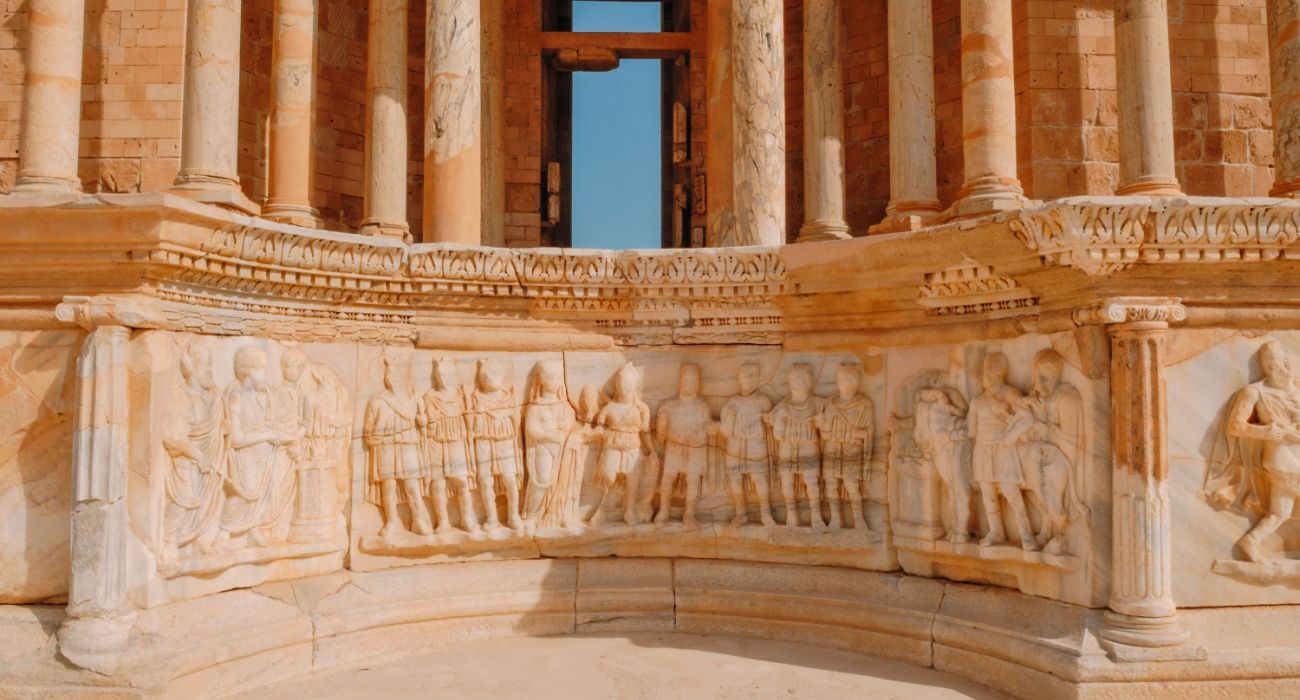Sabratha Is One Of The Forgotten Roman Cities Of Libya & Its Full Of Excellent Ruins
Sabratha is one of the overlooked Punic-Roman cities in North Africa and few people ever see it. The ancient Phoenician-turned-Roman city of Sabratha in Libya is one of the few ancient ancient cities remaining on the coast of North Africa. Sabrath was established as a Phoenicians trading post on the Libyan coast around 500 BC, and functioned as an outlet for trading with the products of the Sahara hinterland. The city was also known for its Greco-Roman ruins. It fell under the influence of Carthage as the Romans brought ancient Carthage low and destroyed it in the Punic Wars. During Roman rule, Sabrata flourished to become one of its top cities in the region. It was taken by the Eastern Roman Empire around a century later as they sought to reclaim the fallen Western Roman Empire. The ruins have been UNESCO World Heritage Listed since 1982 and have been reconstructed by the Italians under Italian dictator Mussolini.

Veröffentlicht : vor 2 Jahren durch Aaron Spray in Travel
The long coastline of North Africa is lined with many ancient (and often well-preserved) ancient Greco-Roman cities. One of these notable ancient cities is the ancient Phoenician-turned-Roman city of Sabratha in Libya. Sabratha is a reminder of when North Africa (including the Tripolitania region of Libya) was populated and prosperous during the Roman period.
Sabratha was one of the three cities of Roman Tripolis, the other two being Oea and the spectacularly preserved city of Leptis Magna. Further to the east of Libya in the Cyrenaica region is the ancient Greek colonial city of Cyrene, also boasting exceptional Greco-Roman ruins. Start in Sabratha and learn what makes this ancient city so famous.
The Ancient History Of The Punic Colony Of Sabratha
Sabratha was established as a Phoenician trading post on the Libyan coast. The Phoenicians were one of the first great trading powers of the ancient Mediterranean world.
The Phoenician colony of Sabratha functioned as an outlet for trading with the products of the Sahara hinterland. It was likely established sometime around 500 BC (corresponding to around the beginning of the Classical Greek period).
This early Phoenician trading post was called Tsabratan (written in ancient Punic as 𐤑𐤁𐤓𐤕𐤍, ṣbrtn, or 𐤑𐤁𐤓𐤕𐤏𐤍, ṣbrtʿn). The Greeks called it Sabrata (Σαβράτα) and sometimes Abrotonon (Ἀβρότονον).
As the ancient trading polity of Phoenicia (located in today's Lebanon) declined, its former colony of Carthage rose (particularly in the Western Mediterranean). Sabratha fell under the sphere of influence of Carthage (located in the modern-day capital city of Tunis in Tunisia).
As the Romans brought ancient Carthage low and then utterly destroyed it in the Punic Wars, Sabratha came under the control of the Kingdom of Massinissa.
Related: 10 Ancient Roman Monuments Transformed Into Defensive Structures In The Middle Ages
The short-lived North African Numidian Kingdom of Massinissa soon fell to the Romans (it was annexed to the Roman Republic in the 1st century BC as the new province of Africa Nova).
The city was rebuilt and Romanized during the 2nd and 3rd centuries AD. During this period of Roman rule, Sabratha flourished to become one of the top cities in the region.
Sabratha was the westernmost of a triad of cities in Roman Tripolis. The Roman Emperor Septimius Severus was born nearby in the city of Leptis Magna (which he greatly invested in as emperor).
It was badly damaged in a powerful earthquake late in the Roman Empire around 365 AD. In 429 AD the Vandals began their conquest of North Africa and Sabratha fell to the Vandals as the Western Roman Empire declined
Sabratha was retaken by the Eastern Roman Empire (aka Byzantines) around a century later (533-534) as they sought to reconquer the fallen Western Roman Empire. The Byzantines held the city for around 130 years before expanding Arabs conquered it.
By this time, the glory days of the Roman Empire were long gone, and many Roman cites along the coast lay waste and deserted. During the Middle Ages, Sabratha dwindled to a small village.
Related: Volubilis: Why The Marks Of Ancient Rome In Morocco Are Worth Seeing
The Ruins Of Sabratha & What To See In The Ancient City
Sabratha has been UNESCO World Heritage Listed since 1982 and there have been excavations there since 1921 (mostly by Italian archeologists as Italy controlled Libya until 1942). Much of what people can see in Sabratha today was reconstructed by the Italians under Mussolini.
A number of ancient Roman monuments survive today at Sabratha. One of the most remarkable Roman ruins is the Theater at Sabratha which still has its three-story backdrop.
The dictator Mussolini gave speeches from this ancient theater; at the time, he sought to recreate the ancient Roman Empire based on the Italian Empire (the Italian Empire was crushed in World War Two).
Modern visitors can see the mosaic floors of ancient elite Roman villas (such as Villa Sileen) and the remains of Roman baths. Other ruins in the city include ancient temples (dedicated to Isis, Serapis, and Liber Pater) as well as a Christ basilica from the Byzantine period.
Unfortunately, the site is in need of greater protection as it is in danger of coastal erosion.
Some of the recovered artifacts and treasures are found on display in the adjacent museum to the archeological site while artifacts are on display at the national museum in the capital city of Tripoli. Sabratha is around 50 miles west of the modern city of Tripoli.
One of the most impressive Roman cities to explore in North Africa is the ancient Roman city of Timgad in modern-day Algeria. Arguably the most impressive (and most visitable) single Roman monument to visit in the region is the Roman Amphitheater of El Jem in Tunisia which rivals the Colosseum in size and preservation.
